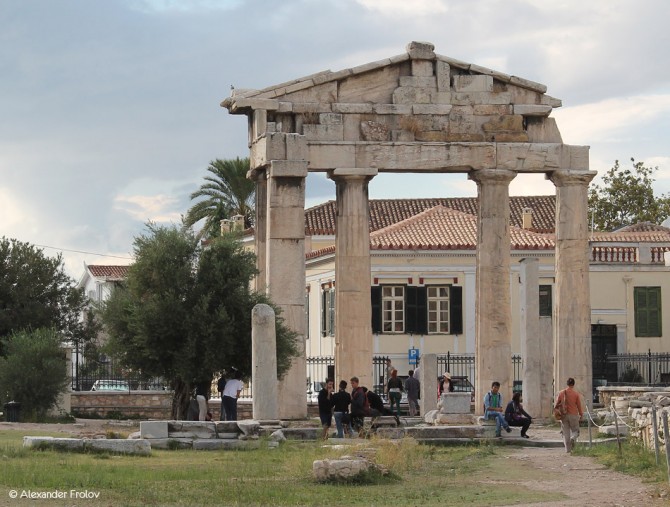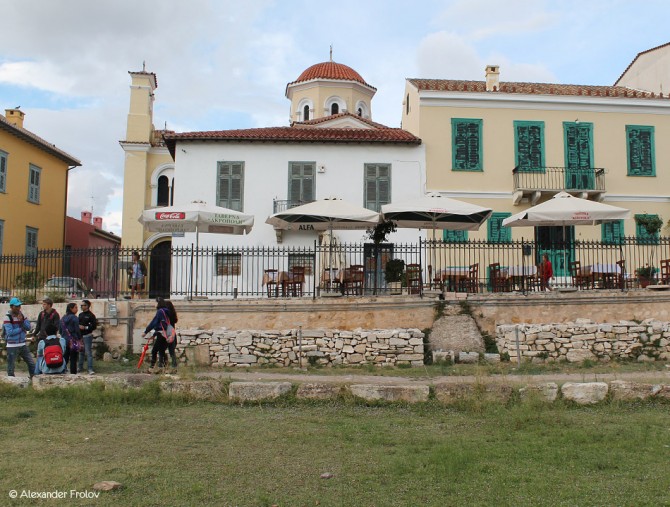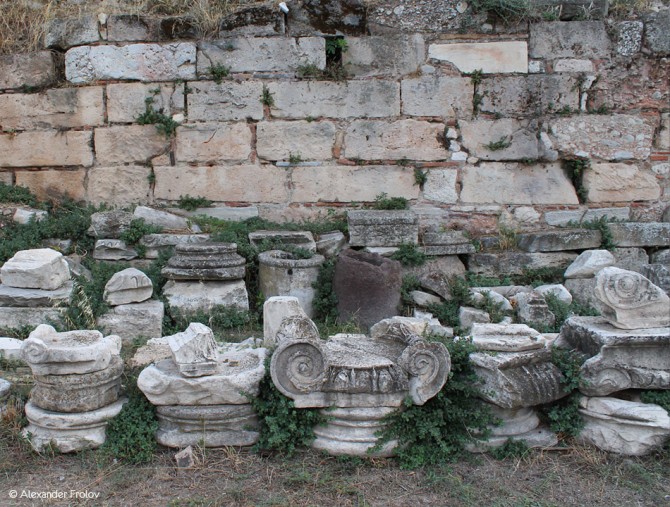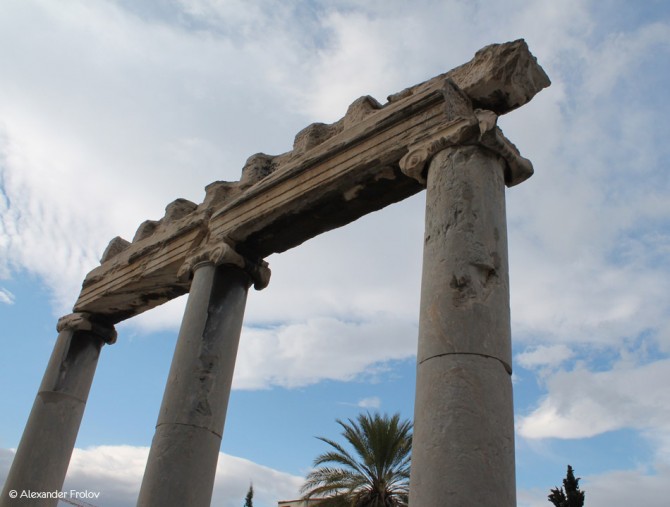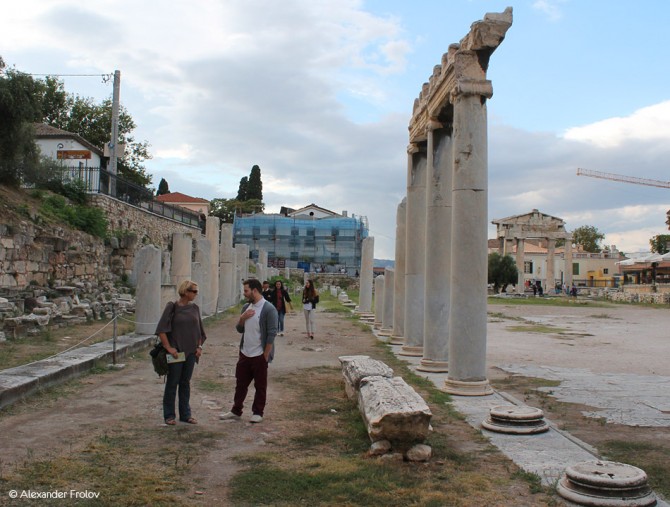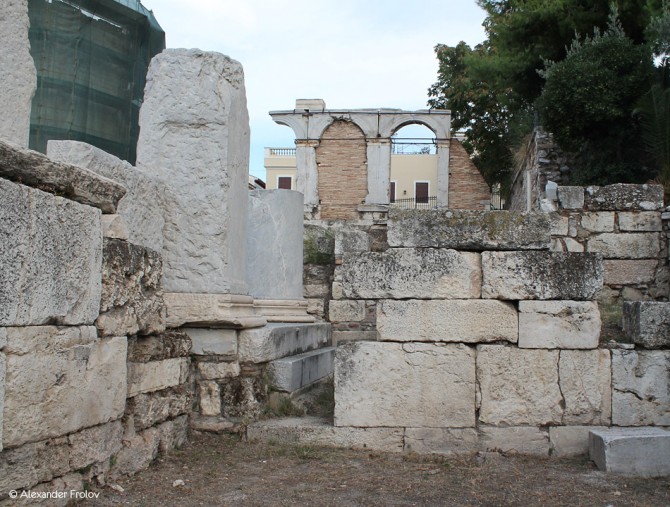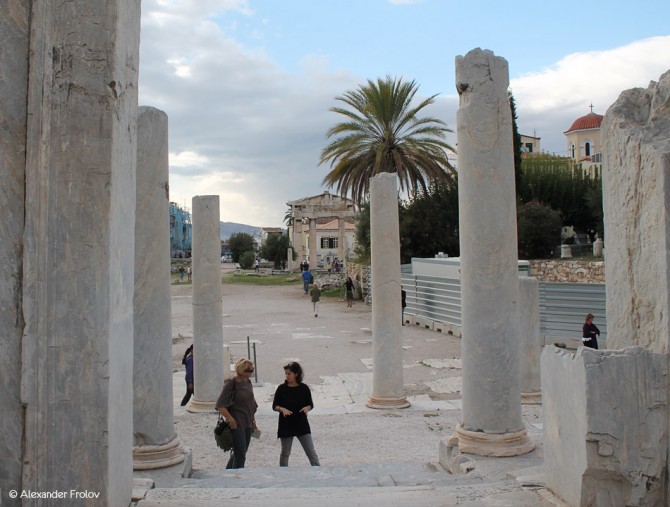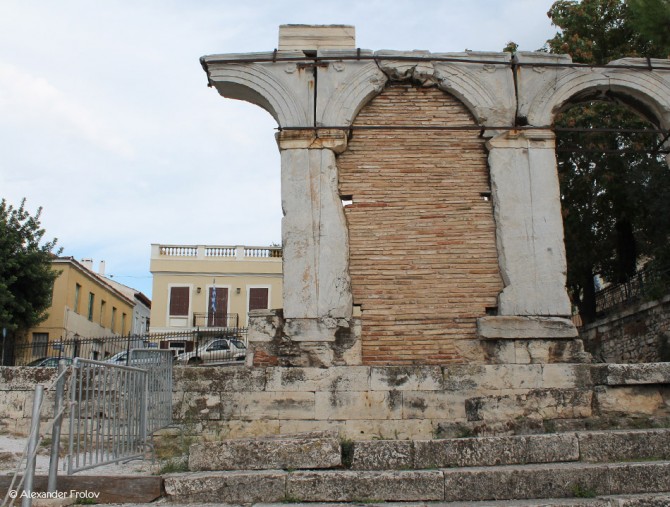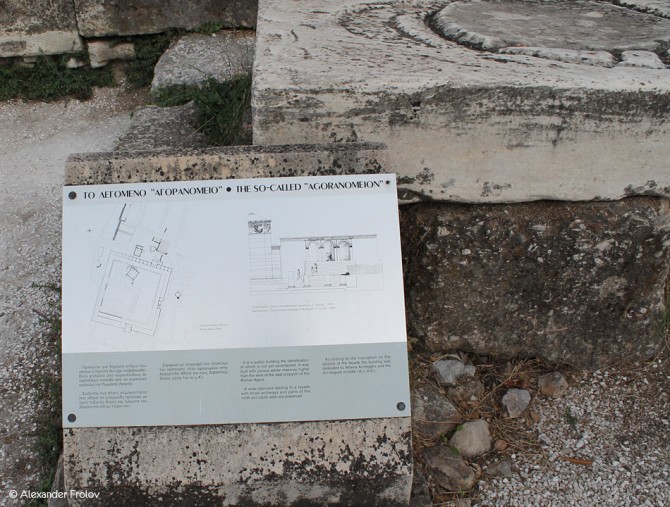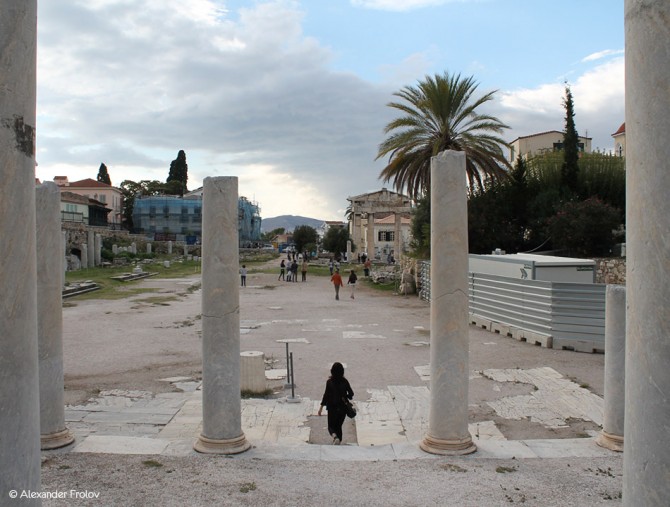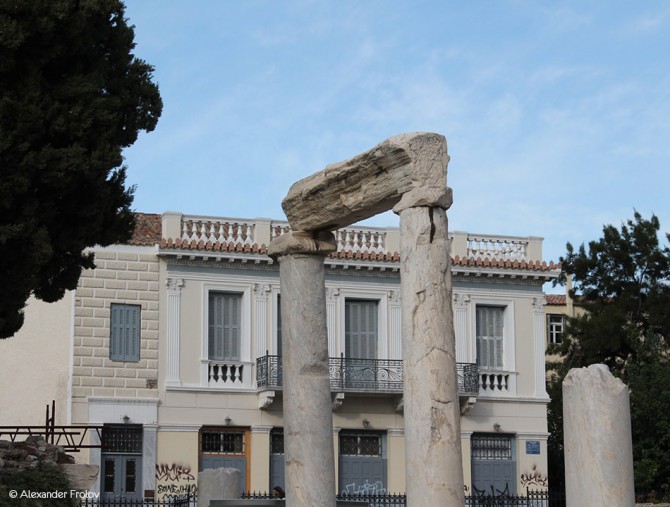Римская агора
Римская Агора в Афинах расположена на северной стороне от Акрополя, по соседству с агорой древней и Библиотекой Адриана. Построена она была в между 19 и 11 годами до н.э. на пожертвования Юлия Цезаря и Августа.
В древности это был огромный прямоугольный атриум 111 на 98 метров окруженный арками, магазинами и складскими помещениями. До наших дней сохранился ионический внутренний двор, датируемый II веком н.э.. Но лучше сохранились колоннады южной и восточной стороны и ворота. В северной части комплекса находятся руины общественных туалетов построенных в первом веке до н.э.. На восточной стороне Римской Агоры было большое количество магазинов, а на западе располагался фонтан. Ее главный вход был на западной стороне, известный как ворота Athena Archigetria, но был также и второй вход на восточной стороне, ведущей к баням и к "Башне Ветров". Впечатляющая Башня Ветров это восьмиугольное здание высотой 12 метров фунционировшее как метеостанция было построено из пентелийского мрамора знаменитым астрономом Андроником примерно в 50 году до н. э.. В раннехристианские годы башня использовалась в качестве колокольни византийской церкви неподалеку. А во времена турецкой оккупации и вовсе была этаким притоном бродячих монахов-мусульман.
Римская Агора была особенно важным местом Древних Афин после катастрофического разрушения города Эрулием в 267 г. н.э.. В результате чего основная городская жизнь переместилась именно сюда.
Часы работы: 08:00-15:00 без выходных.
Цена билета: 2 евро или по комплексному билету за 12 евро дающему право посещения Акрополя и всех важнейших археологических раскопок. В их число входят: Древняя агора, древнее кладбище Керамикос, Музей Древней агоры, Музей Керамикос, Библиотека Адриана, Храм Зевса Олимпийского, южный и северный склоны Акрополя.
Как добраться до Римской агоры:
- на метро, станция Монастираки, сразу за Библиотекой Адриана.
Фото и текст: Александр Фролов
The Roman Agora of Athens
The Roman Agora is located on the north side of the Acropolis, a short distance from the eastern side of the Ancient Agora of Athens and they are connected with a narrow paved road. It was built between 19 and 11 BC in honor of Julius Caesar. During the reign of Emperor Hadrian, it was paved with slabs. After the invasion of Heroulis in 267 AD, the city of Athens was merged in the area within the Roman city walls, and the administrative and commercial center was moved from the Ancient Agora to the Roman Agora and the Hadrian’s Library. The Roman Agora consists of a large open courtyard surrounded by columns on all four sides. On the eastern side of the Agora there were a large number of shops, while on the west side there was a fountain. Its main entrance was on the west side, known as the Gate of Athena Archigetria, and there was also a second entrance on the east side leading to the public baths and the “Tower of the Winds.” The impressive Tower of the Winds is an octagonal building height of 12 meters which functioned as weather station and was built with Pentelic marble from the famous astronomer Andronicus around 50 BC. It had a water clock that fed a water tank on the south side of the tower and a mechanical structure inside which could represent the sun, the moon and five other known planets of that time. The reliefs representing the eight different winds and their personalities, in each of the eight sides of the tower, is the most beautiful part of the tower and worth to look at it. In early Christian times, the bell tower was used as belfry of a neighboring Byzantine church. During the Ottoman occupation turned into “opium den” and it was a place where the dervishes (Muslims monks) were gathering. After the necessary demolitions and expropriations of private buildings, a series of excavations undertaken in the periods (1837 – 1931) and (1963-1964), brought into light the ancient ruins of the Roman Agora of Athens in its current form.
The Roman Agora of Athens, between the streets Pelopidas, Marcus Aurelius, Polygnotou, Dioscuri and Epaminondas, Plaka, Athens, metro station Monastiraki. Tickets: (Full) 2 euros, (Reduced) 1 euro. Special ticket package: (Full) 12 euros, (Reduced) 6 euros. Valid for: Acropolis of Athens, Ancient Agora of Athens - Areopagus, Kerameikos Archaeological Museum, Hadrian’s Library, North slope of Acropolis, Kerameikos, Museum of the Ancient Agora of Athens, South Slope of Acropolis, Olympieio, Roman Agora of Athens. Opening Hours: 08:00-15:00, last enrty: 14:45.
Τext: Marilou Pantazi

